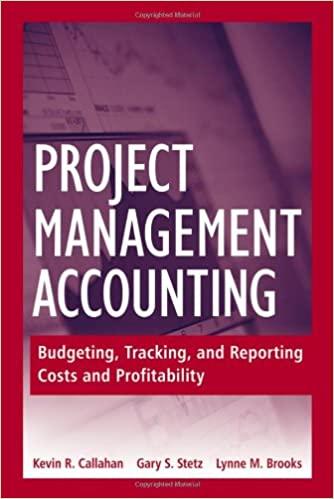Question
The balance sheet of Drake Enterprises as at December 31, Year 5, is as follows: Assets Cash $ 129,700 Accounts receivable 161,000 Inventory 209,400 Property,
The balance sheet of Drake Enterprises as at December 31, Year 5, is as follows:
| Assets | ||||
| Cash | $ | 129,700 | ||
| Accounts receivable | 161,000 | |||
| Inventory | 209,400 | |||
| Property, plant and equipment | 1,872,000 | |||
| Accumulated depreciation | (918,000 | ) | ||
| $ | 1,454,100 | |||
| Liabilities and Equity | ||||
| Current liabilities | $ | 260,000 | ||
| Bonds payable | 370,000 | |||
| Common shares (118,000 shares) | 238,000 | |||
| Retained earnings | 586,100 | |||
| $ | 1,454,100 | |||
Effective January 1, Year 6, Drake proposes to issue 91,500 common shares (currently trading at $20 per share) for all of the common shares of Hanson Industries. In determining the acquisition price, the management of Drake noted that Hanson Industries has unrecorded customer service contracts and directed its accounting staff to reflect this when recording the acquisition. An independent appraiser placed a value of $168,000 on this unrecorded intangible asset. Direct costs associated with the acquisition were as follows:
| Costs of issuing shares | $ | 62,000 |
| Professional fees | 56,500 | |
| $ | 118,500 | |
The balance sheet of Hanson Industries as at December 31, Year 5, is as follows:
| Carrying Amount | Fair Value | |||||
| Cash | $ | 73,000 | $ | 73,000 | ||
| Accounts receivable | 293,000 | 307,500 | ||||
| Inventory | 205,000 | 187,200 | ||||
| Property, plant and equipment | 1,349,000 | 1,215,500 | ||||
| Accumulated depreciation | (318,000 | ) | ||||
| $ | 1,602,000 | |||||
| Current liabilities | $ | 155,500 | 155,500 | |||
| Liability for warranties | 117,000 | 149,600 | ||||
| Common shares | 678,000 | |||||
| Retained earnings | 651,500 | |||||
| $ | 1,602,000 | |||||
Hanson Industries is to be wound up after the sale.
Required:
(a) Assume that the shareholders of Hanson accept Drakes offer on the proposed date. Prepare Drakes January 1, Year 6, consolidated balance sheet after the proposed transaction occurred. (Negative amounts should be indicated by a minus sign.)
(b) Assume that Drake is a private entity, uses ASPE, and chooses to use the equity method to account for its investment in Hanson. Prepare Drakes January 1, Year 6, balance sheet after the proposed transaction occurred. (Negative amounts should be indicated by a minus sign.)
(c) Calculate the debt-to-equity ratio under Consolidated and Equity Method. (Round your answers to 2 decimal places.)
| Consolidated | Equity Method | ||
| Debt-to-equity ratio | |||
(d) Prepare Drakes consolidated balance sheet after the proposed transaction occurred using the worksheet approach. (Values in the first two columns and last column (the "parent", "subsidiary" and "consolidated" balances) that are to be deducted should be indicated with a minus sign, while all values in the "Entry" columns should be entered as positive values. For accounts where multiple adjusting entries are required, combine all debit entries into one amount and enter this amount in the debit column of the worksheet. Similarly, combine all credit entries into one amount and enter this amount in the credit column of the worksheet. Leave no cells blank - be certain to enter "0" wherever required. Omit $ sign in your response.)
| Consolidated Financial Statement Working Paper | |||||||
| Drake Company | |||||||
| Consolidated Balance Sheet | |||||||
| January 1, Year 6 | |||||||
| Entries | |||||||
| Drake | Hanson | Dr. | Cr. | Consolidated | |||
| Cash | $ | $ | $ | $ | $ | ||
| Accounts receivable | |||||||
| Inventory | |||||||
| Property, plant and equipment | |||||||
| Accumulated depreciation | |||||||
| Investment in Hanson | |||||||
| Acquisition differential | |||||||
| Customer service contracts | |||||||
| Goodwill | |||||||
| $ | $ | $ | |||||
| Current liabilities | $ | $ | $ | ||||
| Bonds payable | |||||||
| Liability for warranties | |||||||
| Common shares | |||||||
| Retained earnings | |||||||
| Total | $ | $ | $ | $ | $ | ||
Step by Step Solution
There are 3 Steps involved in it
Step: 1

Get Instant Access to Expert-Tailored Solutions
See step-by-step solutions with expert insights and AI powered tools for academic success
Step: 2

Step: 3

Ace Your Homework with AI
Get the answers you need in no time with our AI-driven, step-by-step assistance
Get Started


